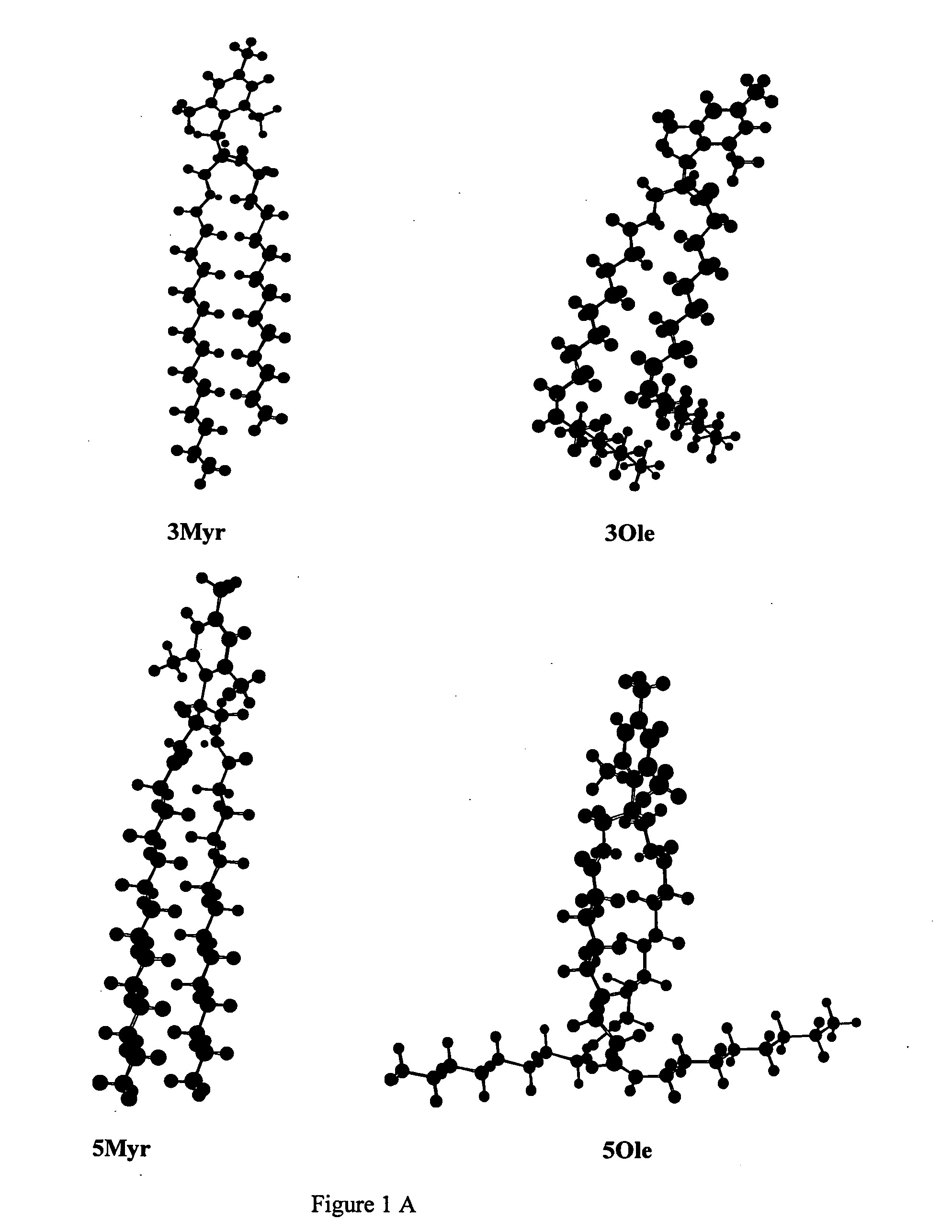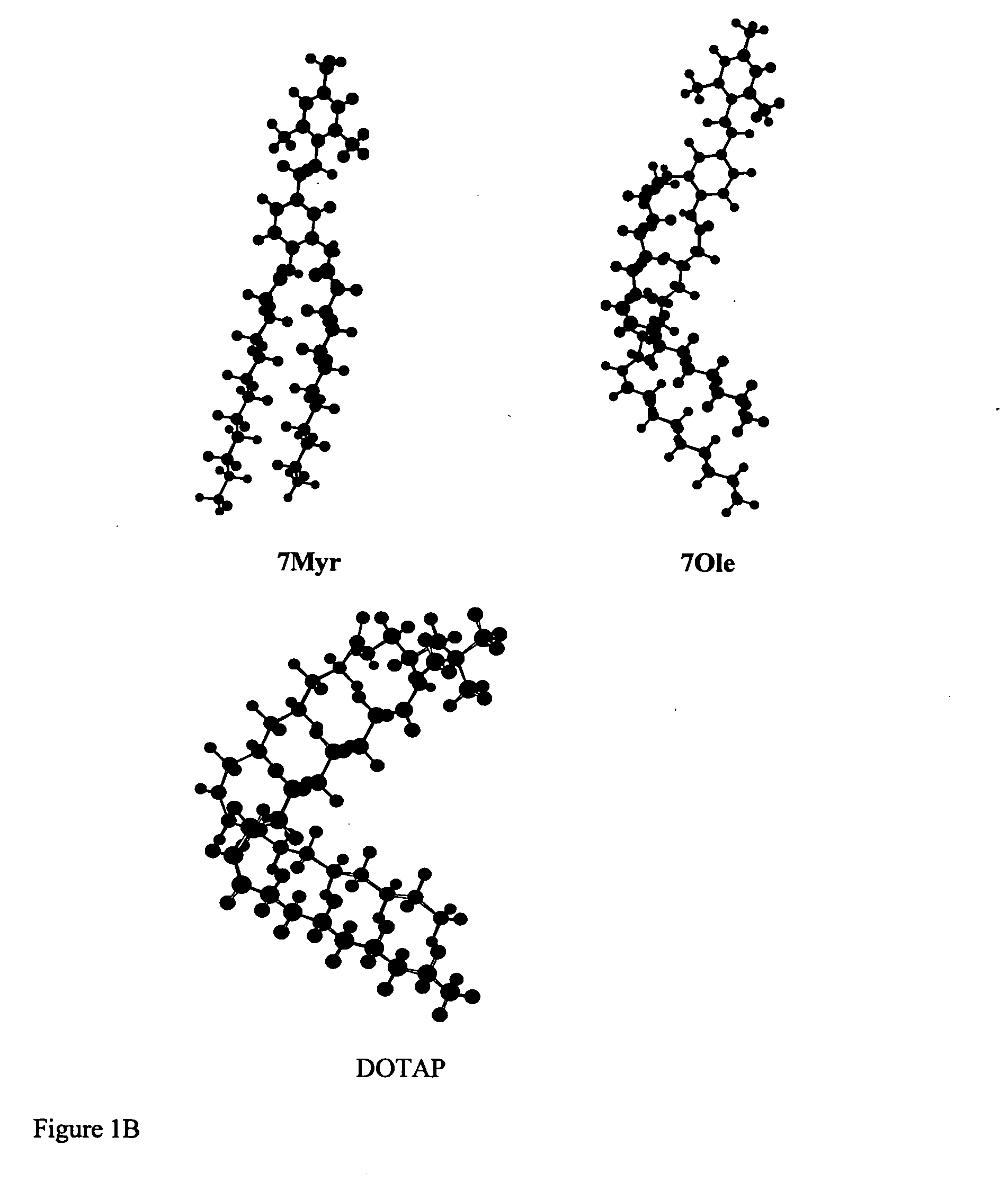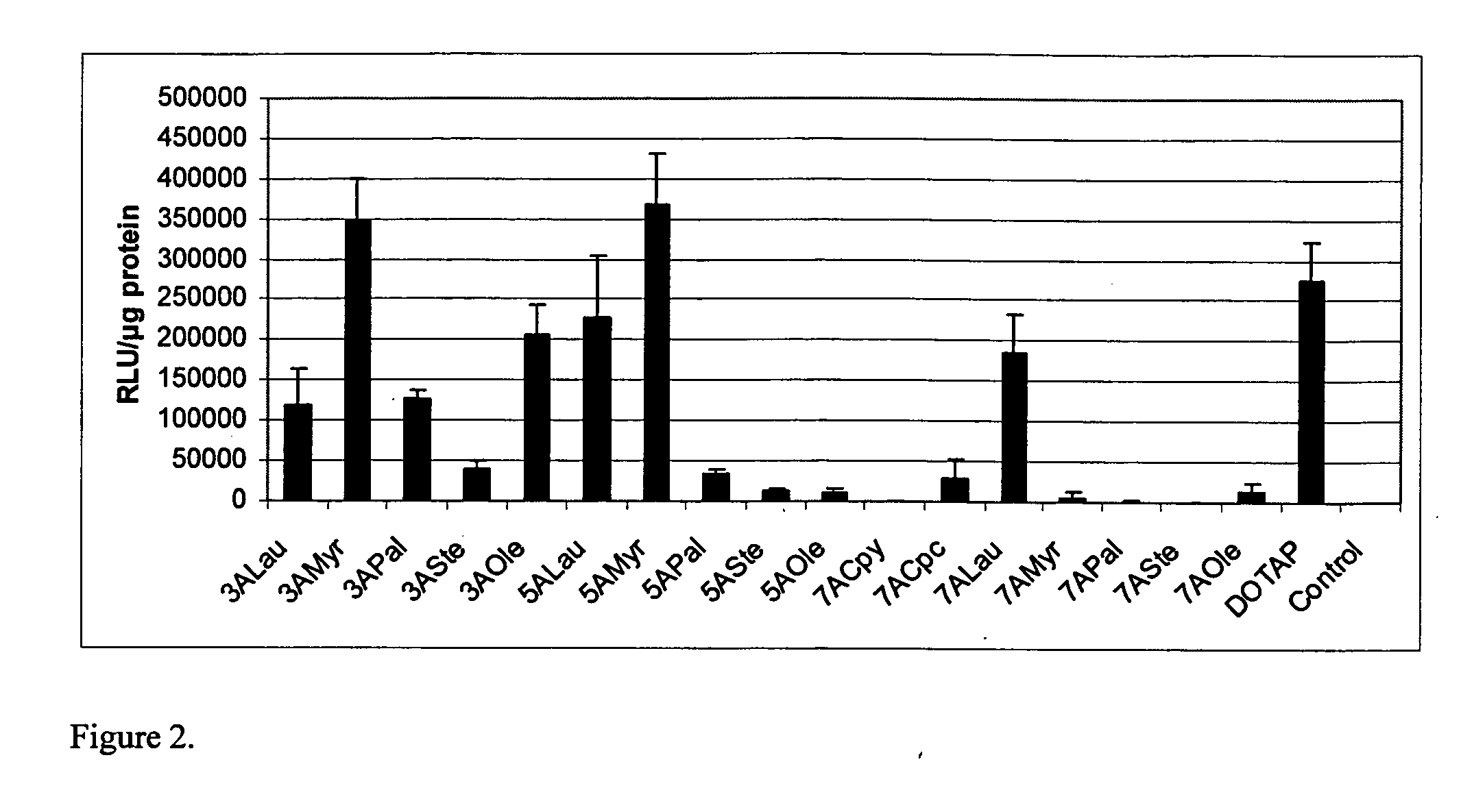Pyridinium cationic lipids as gene transfer agents
a technology of pyridinium cationic lipids and gene transfer agents, which is applied in the field of molecular biology and chemistry, can solve the problems of hampered effectiveness of these agents
- Summary
- Abstract
- Description
- Claims
- Application Information
AI Technical Summary
Benefits of technology
Problems solved by technology
Method used
Image
Examples
example 1
Synthesis of 1-(3,4-Bishexadecyloxyphenylethyl)-2,4,6-trimethyl) Pyridinium Hexafluorophosphate
Step A. Synthesis of 1-(3,4-Bishydroxyphenylethyl)-2,4,6-trimethyl) Pyridinium Hexafluorophosphate. (3, n=2).
[0168] 3-Hydroxytyramine hydrochloride (2, n=2, 1.90 g, 10 mmol) of was suspended in 30 mL of anhydrous ethanol and treated with 2.68 g (10 mmol) of 2,4,6-trimethylpyrylium hexafluorophosphate (1) and 1.40 mL (10 mmol) of triethylamine. The dispersion was heated to reflux for 5 minutes, then 0.6 mL of acetic acid (10 mmol) was added and the reaction mixture was refluxed for another hour. Then, concentrated aqueous ammonia (0.5 mL) was added for converting any unreacted pyrylium salt into sym-collidine that is soluble in diethyl ether, and the reflux continued for another five minutes. After cooling, the mixture was poured into 200 mL anhydrous diethyl ether, the pale-cream colored solid was separated, washed with two portions (20 mL each) of diethyl ether, suspended in 5 mL of et...
example 2
Synthesis of 1-(bis(hexadecyl)aminoethyl)-2,4,6-trimethylpyridinium Hexafluorophosphate (9, m=15, n=2)
Step A. Synthesis of 1-(aminoethyl)-2,4,6-trimethylpyridinium Hexafluorophosphate (8, n=2).
[0172] Ethylenediamine (6.0 g, 100 mmol) was dissolved in 30 mL of chloroform and treated under stirring with 2.68 g (10 mmol) of 2,4,6-trimethylpyrylium hexafluorophosphate. The solution was refluxed for 1 h, evaporated to ⅓ of the initial volume, cooled and poured into 100 mL of diethyl ether under stirring. The precipitated oily liquid was separated, washed with another two portions (20 mL each) of diethyl ether, and taken into 5 mL of hot ethanol. On cooling overnight the product crystallized and was filtered off, washed with cold ethanol and dried to yield 2.40 g of 8 (78%). TLC (MeOH:CHCl3 20:80 v / v) showed a high purity and it was used directly in the next step.
Step B. Alkylation of 1-(aminoethyl)-2,4,6-trimethylpyridinium Hexafluorophosphate with Hexadecyl Bromide.
[0173] 1-(Amino...
example 3
Synthesis of 2,4-dimethyl-1,6-ditetradecylpyridinium Hexafluorophosphate (12, m=n=13)
Step A. Synthesis of 2,4-dimethyl-6-tetradecylpyrylium Hexafluorophosphate (10, n=13).
[0175] n-Pentadecanoic acid (24.3 g, 0.1 mol) was refluxed with 45 mL of thionyl chloride for 90 minutes. The thionyl chloride in excess was evaporated under reduced pressure, 20 mL of hexane was added and then evaporated under reduced pressure to remove the traces of any remaining thionyl chloride. Anhydrous aluminum chloride (13.5 g, 0.1 mol) was added to the crude pentadecanoyl chloride under stirring and external cooling. The mixture became homogeneous in about 10 minutes. Then 12 mL (0.15 mmol) of mesityl oxide was added dropwise, and the reaction mixture was stirred at room temperature for 12 h. The resulting dark viscous mass was hydrolyzed by carefully adding 50 mL of ice-cold 5% hydrochloric acid and 50 mL of diethyl ether, with external cooling (ice bath). The ethereal layer was separated and extracted...
PUM
| Property | Measurement | Unit |
|---|---|---|
| Equivalent mass | aaaaa | aaaaa |
| Ratio | aaaaa | aaaaa |
Abstract
Description
Claims
Application Information
 Login to View More
Login to View More - R&D
- Intellectual Property
- Life Sciences
- Materials
- Tech Scout
- Unparalleled Data Quality
- Higher Quality Content
- 60% Fewer Hallucinations
Browse by: Latest US Patents, China's latest patents, Technical Efficacy Thesaurus, Application Domain, Technology Topic, Popular Technical Reports.
© 2025 PatSnap. All rights reserved.Legal|Privacy policy|Modern Slavery Act Transparency Statement|Sitemap|About US| Contact US: help@patsnap.com



